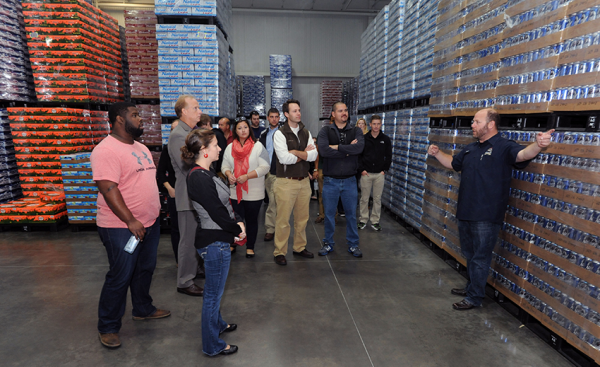Top Industries
Why does it matter?
Comparing these metrics across industries can tell us how our region specializes in production and trade. It also allows us to gauge the level of competition or demand for workers in a particular field. Some measures may be more useful than others, or lack context without gaining a better idea of its relationship to other variables.

In particular identifying the Location Quotient, or LQ, for an industry is meaningless without the number of jobs as context. A high LQ means a high concentration of that industry in our area when compared to other larger geographic regions but the concentration depends on the number of jobs available in the region. This is why we measure the correlation between LQ on the x-axis and jobs on the y-axis. Utilities had the highest LQ in 2020, but the number of jobs were incredibly low, whereas Government jobs were abundant with an above average LQ.
Where are we now?
Certain industries in our area are more successful than other industries because of regional specialization or job growth. However, some industries that yield substantial job growth may not offer competitive compensation. Others may have high location quotients but low job growth. There are always trade-offs when comparing the “success” of one industry against another.
The three highest earning industries in 2021 were Utilities, Finance, and Management of Companies. In 2015, Manufacturing earnings exceeded those of Mining, making Utilities, Management of Companies, and Manufacturing the highest earning industries of that year. The Gross Regional Product or GRP is a monetary measure of the market value for all final goods and services, which is also displayed by industry. In 2015, the top three contributors to our region’s GRP were Government, Health Care, and Finance and insurance. Meanwhile, in 2021, the same holds true for the three top contributors to our region’s GRP. Finance and Insurance overtook Health Care as the number two contributor, still below the Government sector.
The three industries with the greatest number of jobs from 2015 to 2023 has been Government, Health Care, and Retail Trade. Though these were the industries with the most jobs available for the period, they have not had substantial growth over time. The top three growing industries were Finance and Insurance, Construction and Educational Services.
How do we measure it?
All of the industry metrics use NAICS 2-digit industry codes. These are the highest levels of NAICS codes available, making them a broad and simplified measure of industry characteristics. Earnings by top industries compares average yearly earnings by industry. Gross Regional Product (GRP) displays the top industries by GRP in the region. Jobs within the largest industries displays the industries with the highest number of jobs. The location quotient compares the competition and regional concentration of industries in relation to other geographical regions. A higher number represents a greater concentration of that industry. The top growing industries display the regional job growth (or loss) within an industry from 2015–2023.
- Average annual earnings: “Databases, tables & calculators by subject,” U.S. Bureau of Labor Statistics, 2015-2020, 2020, Datasheet retrieved from https://www.bls.gov. Lightcast – lightcast.io.
- GRP: “Databases, tables & calculators by subject,” U.S. Bureau of Labor Statistics, 2015-2020, 2020, Datasheet retrieved from https://www.bls.gov/data. Lightcast – lightcast.io.
- Jobs: “Databases, tables & calculators by subject,” U.S. Bureau of Labor Statistics, 2015-2020, 2020, Datasheet retrieved from https://www.bls.gov/data. Lightcast – lightcast.io.
- LQ: “Databases, tables & calculators by subject,” U.S. Bureau of Labor Statistics, 2015-2020, 2020, Datasheet retrieved from https://www.bls.gov/data. Lightcast – lightcast.io.
- Job growth: “Databases, tables & calculators by subject,” U.S. Bureau of Labor Statistics, % change 2015-2020, 2020, Datasheet retrieved from https://www.bls.gov/data. Lightcast – lightcast.io.
What call to action is linked to this indicator?
Developing new industries in our region requires encouraging entrepreneurship in these industries as well as attracting existing businesses to the area. Policymakers could increase the desirability to work and do business in our region as a way to encourage industry diversification. Competitive taxes, well-functioning and extensive infrastructure, as well as investing in a talented workforce through education are all features that could encourage the growth of new industries. Different industries require different services and features of the region, so policymakers should identify which industries they wish to develop and plan accordingly.